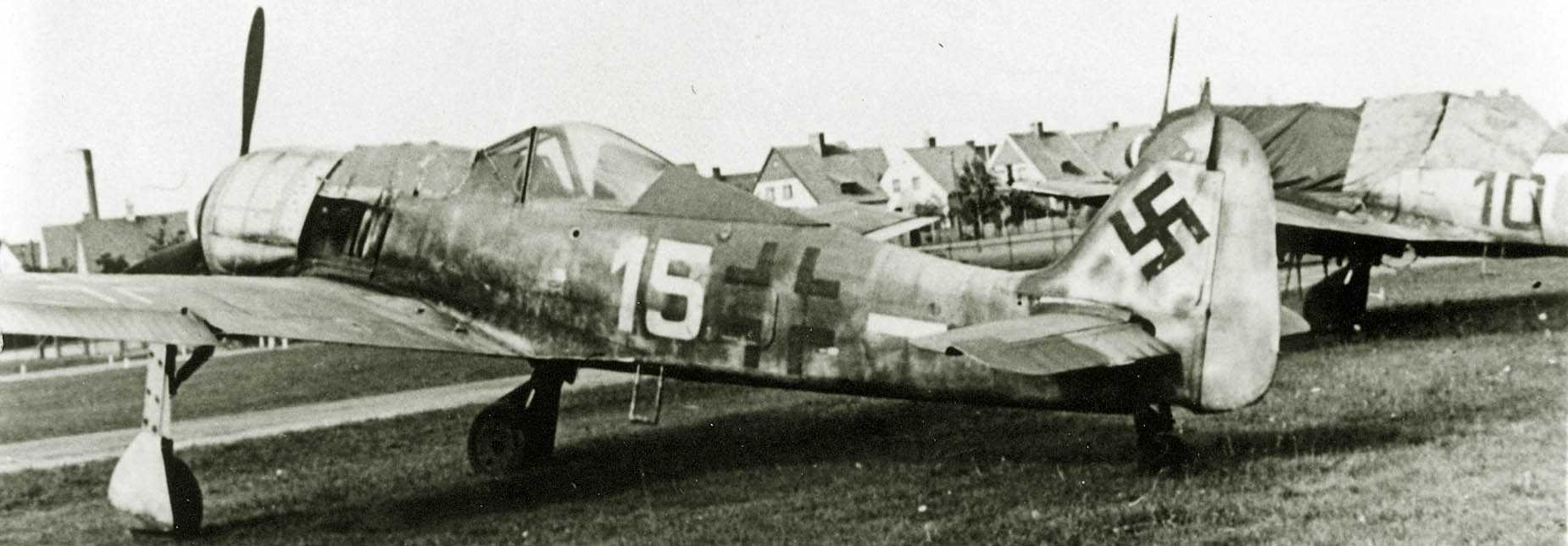
Aviation of World War II


 |
Aviation of World War II |


|
|
Soviet Union | Lend - Lease | Facts | Forum | Germany | Japan | R A F | U S A A F | Other | Photos |
|
|
FW-190A-7/A-8FighterFocke-Wulf
The "combat" showed that new tactical procedures were needed to counter German aircraft flying at low levels. After all, the Focke-Wulfs usually ingressed at low altitudes and regressed at treetop level at maximum speed. Under such conditions, it was hard to detect an attack in time. The pursuit became more complicated, because the gray matte paint concealed the German aircraft against the background of the landscape. In addition, German pilots employed engine reheat at low altitudes. It was determined here that the Focke-Wulf could deliver 582 km/h, i. e. neither the Yak-3 (the aircraft at the Air Forces Scientific Research Institute developed 567 km/h) nor the Yak-9U (575 km/h) could overtake them. Only the La-5 reached 612 km/h in augmented mode, but the speed margin was insufficient to reduce the range between the two aircraft to a distance permitting aimed fire. Based on test results, the institute leadership issued recommendations: it is necessary to echelon the fighters in patrols at different altitudes. In this case, the mission of the pilots on the higher tiers would be to disrupt the bombing and to attack the enemy fighter escort, while the lower patrol aircraft, having the capability to overtake in a shallow dive, probably would be able to intercept the ground-attack aircraft themselves. |
|
|
FW 190 S-5/8
In 1943, work began on a two-seat (tandem) version, which was required by the Luftwaffe mainly for the retraining of Ju.87 pilots. In October of the same year, squadrons with Ju.87s began to re-equip with Fw.190s at an average rate of a group in three weeks. And although this did not cause any particular problems, three Fw.190a-8s were converted into doubles. It was assumed that they would serve as a model for the re-equipment of aircraft directly in the field technical units. The aircraft received the designation Fw.190s. The second cabin was located immediately behind the first in place of the radio station and other equipment. The rear fuselage was raised, both cockpits were covered with a single canopy. The front lamp opened to the right, and the rear (instructor's) lamp moved back. The simplest equipment and instruments were installed in the rear cockpit. Under the designation Fw.190a-8/U1, the first of three prototypes flew on January 23, 1944. Any aircraft of the A series could be converted in this way. In addition to the three two-seater Fw.190a-8/U1, only a few Fw.190s-5 were converted and -8 (former A-5 and -8). They were mainly used for flying at high speeds.
| |||||||||||||||||||||||||||||||||||||||||||||||||||||||||||||||||||||||||||||||||